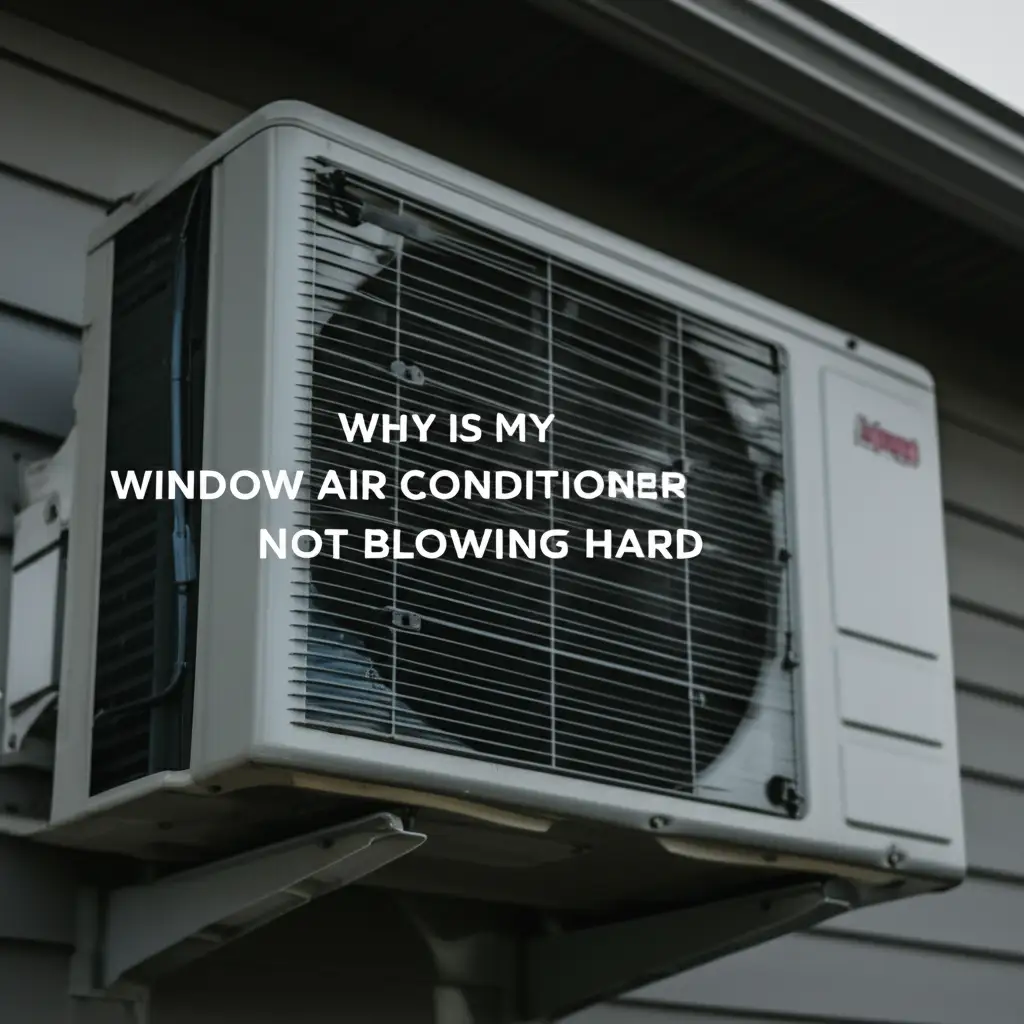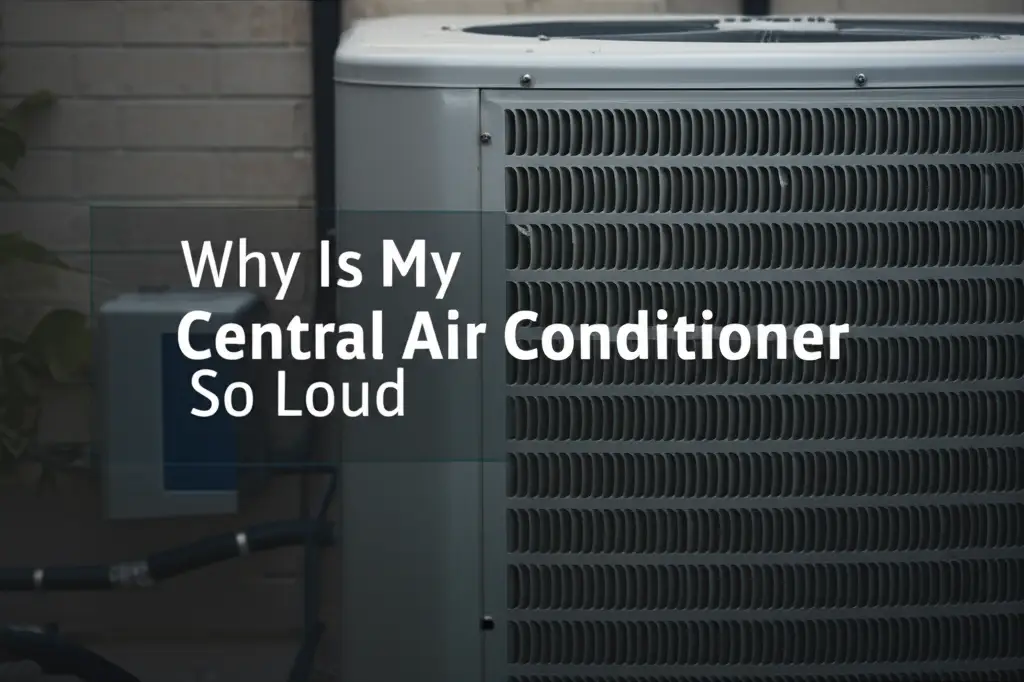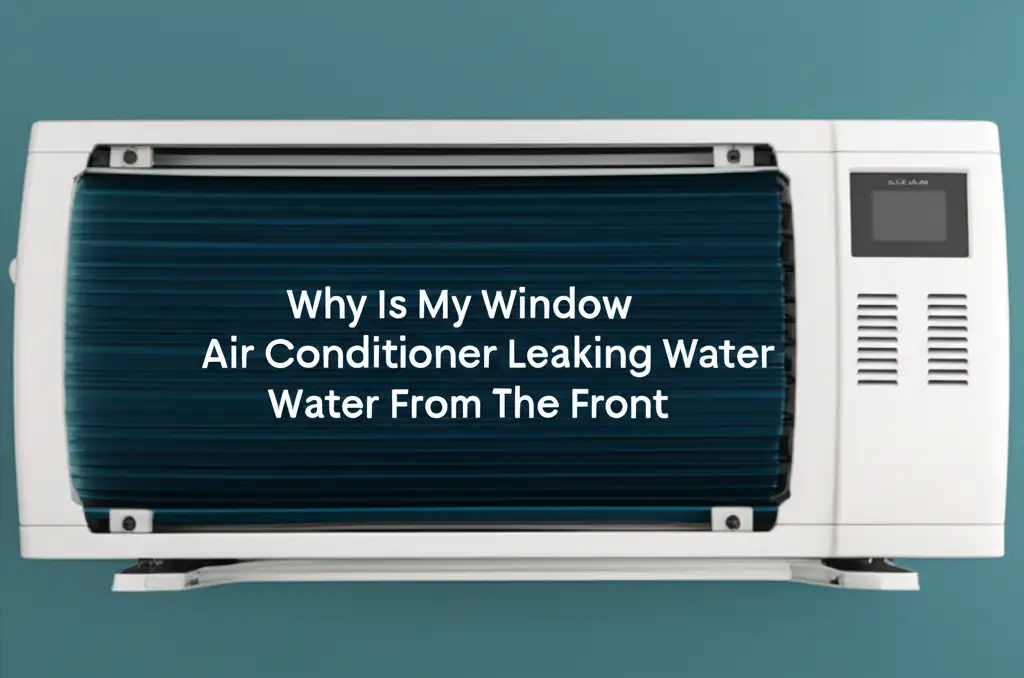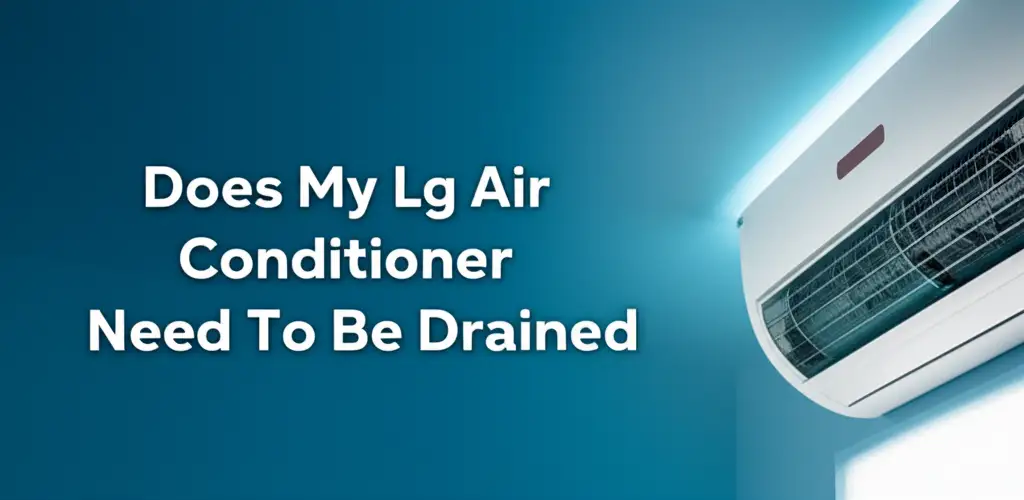· Katria Melrose · Home Appliances · 17 min read
Why Is My Window Air Conditioner Not As Cold As It Used To Be
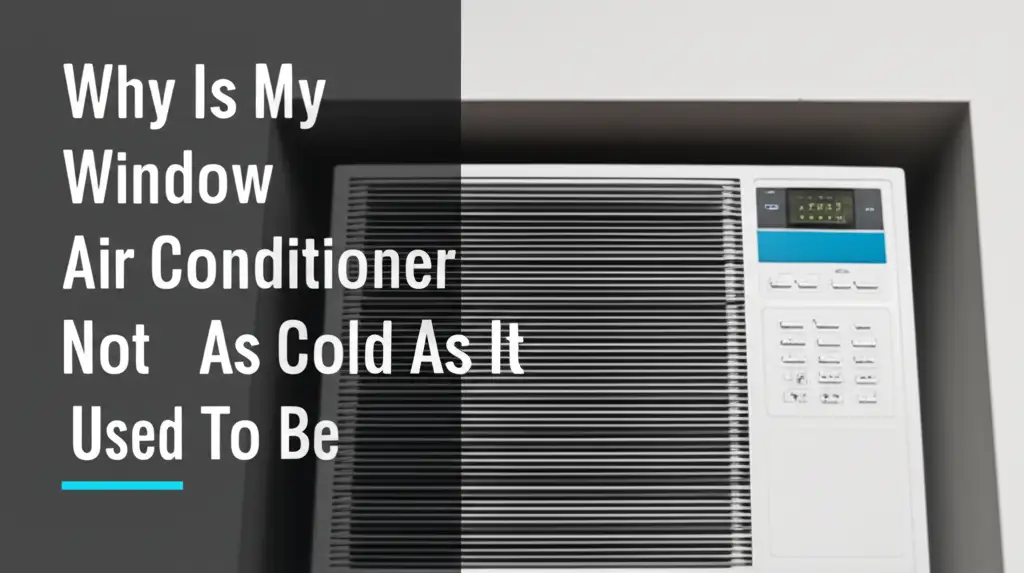
Is Your Window Air Conditioner Not Cooling Well?
Summer heat can be brutal. You rely on your window air conditioner to keep your home cool and comfortable. But what if your window air conditioner is not as cold as it used to be? This common problem can turn a refreshing sanctuary into a stuffy sauna.
Many factors can cause your AC unit to lose its cooling power. Sometimes, the fix is simple and inexpensive. Other times, it might require professional help. Understanding the root causes helps you troubleshoot effectively.
I will guide you through the most common reasons why your window AC might be failing. We will cover everything from routine maintenance to more serious mechanical issues. By the end, you will know how to get your cool air back.
Takeaway
- Clean Regularly: Dirty filters and coils are top reasons for reduced cooling. Cleaning these parts frequently restores efficiency.
- Check Refrigerant: Low refrigerant means a leak; it is not something you “top off.” A professional must fix leaks and recharge.
- Ensure Proper Airflow: Blockages in vents or issues with the fan motor reduce the cold air output.
- Inspect Electrical Components: Faulty capacitors or wiring can prevent the compressor from working correctly.
- Consider Professional Help: Some problems like refrigerant leaks or compressor failure require expert repair.
Why Your Window Air Conditioner Loses Cooling Power
Your window air conditioner is not as cold as it used to be often because of poor airflow, dirty components, low refrigerant levels, or a failing compressor. Regular cleaning and maintenance address many common issues.
Understanding Basic AC Operation
Before we dive into problems, let us understand how a window AC works. Your AC unit cools air through a simple cycle. It uses refrigerant, a special chemical, to absorb heat from your room. The AC then releases this heat outside.
First, warm room air blows over cold evaporator coils. These coils contain liquid refrigerant. The refrigerant absorbs heat from the air, turning into a gas. This cold air then returns to your room.
Next, the gaseous refrigerant travels to the compressor. The compressor increases the refrigerant’s pressure and temperature. This hot, high-pressure gas moves to the condenser coils outside. Air blows over these hot coils.
The condenser coils release the heat to the outside air. The refrigerant turns back into a liquid. This liquid then returns to the evaporator coils, and the cycle repeats. This continuous process keeps your room cool. Any interruption in this cycle reduces cooling efficiency.
The Most Common Culprit: Dirty Air Filters
If your window air conditioner is not as cold as it used to be, the first place to check is always the air filter. This is the simplest and most frequent cause of diminished cooling. A dirty air filter restricts airflow significantly. Your AC unit pulls air from your room through this filter.
Over time, dust, pet dander, and other airborne particles collect on the filter. A clogged filter makes it hard for air to pass through. When airflow is restricted, the evaporator coils cannot properly absorb heat. This means less cool air leaves the unit.
A dirty filter also forces your AC to work harder. The fan motor strains to pull air, using more energy. This extra effort can even lead to the coils freezing over, which further reduces cooling. Cleaning or replacing your air filter regularly is crucial. Most manufacturers recommend cleaning or replacing filters every 2-4 weeks during peak use. This simple step can restore a lot of your AC’s cooling power.
Beyond the Filter: Clogged Evaporator and Condenser Coils
While the air filter is a common culprit, the evaporator and condenser coils also get dirty. These coils are vital for the heat exchange process. Dirt, grime, and mold buildup on them can severely impact your AC’s performance. When your window air conditioner is not as cold as it used to be, dirty coils are a likely suspect.
Dirty Evaporator Coils: Inside the Unit
The evaporator coil is inside your home. It absorbs heat from the indoor air. If this coil becomes coated with dirt or dust, it cannot absorb heat effectively. The dirt acts as an insulating layer, blocking heat transfer. This results in warm air blowing from the unit.
Dust and mold can accumulate quickly, especially if the air filter is not clean. Mold growth on these coils is also a common problem. It not only reduces cooling but also releases unpleasant odors. You can often see this buildup by looking at the coils. Cleaning them carefully is important for proper function. You can learn more about how to clean mold from your window air conditioner. For a thorough guide on maintaining all parts of your unit, consider learning how to clean your air conditioner effectively.
Dirty Condenser Coils: Outside the Unit
The condenser coil is outside your home, facing the outdoor environment. It releases heat collected from inside your house. Leaves, grass clippings, dirt, and pollution can coat this coil. When the condenser coil is dirty, it cannot efficiently dissipate heat. This means the refrigerant stays hotter than it should.
A hot refrigerant cannot absorb as much heat from your indoor air. This leads to less efficient cooling inside your room. The unit will struggle to cool the space, and your electricity bills might rise. Regularly inspecting and cleaning both sets of coils ensures optimal heat exchange. This helps your window AC deliver the cold air you expect. A detailed guide on how to clean air conditioner coils can walk you through the process step-by-step.
The Crucial Role of Refrigerant Levels
Refrigerant is the lifeblood of your air conditioner. It is a chemical compound that cycles through the unit, absorbing and releasing heat. If your window air conditioner is not as cold as it used to be, low refrigerant levels are a serious possibility. This is not a consumable like gasoline; it operates in a closed system.
If the refrigerant level is low, it indicates a leak in the system. A leak means the AC cannot properly transfer heat. The unit simply cannot cool the air effectively without the right amount of refrigerant. You might notice the air coming out is just slightly cool, not cold. You might also hear a hissing sound, or see ice on the coils.
Trying to “top off” the refrigerant yourself is not recommended. It is a complex and potentially dangerous task. Furthermore, just adding refrigerant does not fix the underlying leak. The leak must be found and repaired first. Only certified HVAC technicians can legally handle and dispose of refrigerants. If you suspect a leak, call a professional. They will locate and repair the leak, then recharge the system. This ensures your unit functions safely and efficiently.
Addressing Restricted Airflow and Drainage Issues
Beyond dirty filters and coils, other factors can restrict airflow or cause drainage problems. When your window air conditioner is not as cold as it used to be, these issues can significantly reduce its effectiveness. Proper airflow is essential for the AC to move heat out of your room.
The AC unit has an internal fan that circulates air over the evaporator coils and then pushes cool air into the room. If this fan is blocked or faulty, airflow suffers. Furniture or curtains placed too close to the unit can block the air intake or output vents. Ensure there is clear space around your AC. The fan blades themselves can also accumulate dirt. Clean fan blades allow for better air circulation and prevent strain on the motor.
Another common problem relates to the condensate drain line. As the AC removes humidity from the air, water collects and drains out. If the drain line gets clogged with algae, mold, or debris, water can back up. This standing water can cause several problems. It can lead to mold growth inside the unit, impacting air quality. It can also cause the evaporator coil to freeze because the humidity cannot be properly removed. A frozen coil cannot absorb heat effectively.
You might see water dripping inside your home or hear gurgling sounds if the drain line is clogged. Regularly checking and cleaning the drain line prevents these issues. This is a simple maintenance task that can prevent major headaches. You can find detailed instructions on how to clean an air conditioner drain line to keep your unit running smoothly. Ensuring proper drainage is key to maintaining cool air.
Fan Motor and Electrical Component Failures
If your window air conditioner is not as cold as it used to be, and cleaning has not helped, consider internal component failures. The fan motor and various electrical components are critical for the unit’s operation. When they malfunction, cooling power drops dramatically.
The fan motor drives both the indoor and outdoor fans. These fans move air over the coils for heat exchange. If the fan motor is weak or failing, it cannot move enough air. This leads to poor heat transfer and reduced cooling. You might notice the fan running slower or making unusual noises. Sometimes, a capacitor connected to the fan motor can fail. The capacitor provides the initial burst of power needed to start the motor. A bad capacitor means the fan might struggle to start or not run at all.
Beyond the fan motor, other electrical components can cause issues. The compressor is powered by its own capacitor. If this capacitor fails, the compressor might not start or run. The compressor is the heart of the AC system. It pressurizes the refrigerant. Without a functioning compressor, the refrigerant cannot cycle properly, and the unit will not cool. You might hear a humming sound but no cooling action.
Other electrical problems include faulty wiring, a bad thermostat, or issues with the control board. A thermostat that reads the temperature incorrectly can cause the unit to shut off prematurely or not cool enough. While some electrical checks can be done by a homeowner, most electrical repairs or replacements should be handled by a qualified technician. Tampering with electrical components without proper knowledge is dangerous.
Compressor Issues and Unit Sizing
When your window air conditioner is not as cold as it used to be, especially after you have checked the simpler issues, the compressor might be the problem. The compressor is the engine of your AC unit. It circulates the refrigerant and raises its pressure. If the compressor fails, your unit will not cool at all, or it will produce only very weak cool air. Compressor failure often means the unit needs significant repair or replacement.
Signs of a failing compressor include the unit running but not blowing cold air. You might hear loud grinding or rattling noises from the unit. Sometimes, the compressor just completely stops working. This is usually due to age, lack of maintenance, or continuous overwork. If the compressor frequently struggles to start, it could also be a sign of a failing start capacitor mentioned earlier.
Another less obvious reason for insufficient cooling relates to the unit’s size for the room. An AC unit that is too small for the space it needs to cool will constantly run. It will struggle to reach the desired temperature, never truly feeling “cold enough.” This leads to higher energy bills and increased wear on the unit. Conversely, a unit that is too large can “short-cycle.” It cools the room too quickly and shuts off before it can properly dehumidify. This leaves the air feeling clammy and not truly comfortable.
Ensuring your window AC unit is appropriately sized for your room is crucial. Factors like room dimensions, ceiling height, insulation, number of windows, and even the amount of sunlight the room receives affect sizing requirements. Consulting an HVAC professional can help determine the correct BTU (British Thermal Units) for your space. This ensures optimal cooling and efficiency for the long run.
Environmental Factors and Installation Glitches
Sometimes, your window air conditioner is not as cold as it used to be due to external factors or installation errors. The environment outside and inside your home plays a significant role in AC performance. Your AC works hardest when outdoor temperatures are very high. If it is an exceptionally hot day, the unit might struggle to cool as effectively as it normally would. Its cooling capacity can be stretched to its limits.
Sunlight directly hitting the outdoor part of the AC unit can also make it work harder. The sun heats the condenser coils, making it more difficult for them to release heat. Consider shading the outdoor part of the unit if possible. However, ensure that any shade does not restrict airflow around the unit. Good airflow is key for heat dissipation.
Poor installation is another hidden culprit. If the unit is not sealed properly in the window, outside hot air can leak into the room. This constant influx of warm air defeats the AC’s cooling efforts. Check for gaps around the unit where the window meets the AC. Use weatherstripping or foam insulation kits to seal any gaps. This prevents air infiltration and keeps the cool air inside.
Furthermore, if the unit is not tilted slightly downwards towards the outside, water may not drain properly. This can lead to water pooling inside the unit, causing the issues discussed earlier. Ensure your window AC is installed level from side to side but has a slight downward slope towards the outside. Proper installation ensures your unit can perform its best.
Performing Regular Maintenance for Optimal Cooling
Consistent maintenance is key to preventing your window air conditioner from losing its cooling power. Many issues arise from neglect. Regular care keeps your unit running efficiently and extends its lifespan. When your window air conditioner is not as cold as it used to be, a maintenance routine can often be the solution.
First and foremost, clean the air filter regularly. I mentioned this earlier because it is critical. Check it every two weeks during heavy use. Wash or replace it as recommended by the manufacturer. This ensures unrestricted airflow. You can refer to our guide on how to clean an air conditioner filter for detailed steps.
Next, focus on the coils. Dust and debris can build up on both the evaporator and condenser coils. Turn off the unit and unplug it before cleaning. Use a soft brush or a vacuum with a brush attachment to gently remove surface dirt. For stubborn grime, a specialized coil cleaner spray can be used. Follow product instructions carefully. This cleaning improves heat transfer efficiency. Learn more about how to clean air conditioner coils for best results.
Do not forget the drain line. Periodically check the drain pan and line for blockages. Clear any visible debris, mold, or algae. A mixture of water and a small amount of bleach can help prevent mold growth in the drain pan. This prevents water backup and frozen coils. Our guide on how to clean an air conditioner drain line provides more specific instructions.
Finally, keep the area around the unit clear. Ensure curtains, furniture, or outdoor foliage do not block the air intake or exhaust vents. This ensures proper airflow. You should also check the window seal for any gaps. Adding weatherstripping or foam insulation can prevent warm air from leaking in. These simple, consistent maintenance steps will help your window AC stay cold and reliable. Consider this part of your overall home maintenance, much like you would how to clean your window regularly.
When to Call a Professional
While many window air conditioner issues are fixable at home, some problems require professional expertise. If your window air conditioner is not as cold as it used to be after you have tried all the troubleshooting steps, it is time to call an HVAC technician. Attempting complex repairs without proper training can be dangerous and cause further damage.
The most common reason to call a professional is a suspected refrigerant leak. Refrigerant is a regulated substance. It requires special tools and training to handle safely. A technician can accurately diagnose the leak, repair it, and then safely recharge the system. They have the necessary equipment to recover existing refrigerant and add new refrigerant without harming the environment or yourself.
Compressor failure is another big reason for professional help. Replacing a compressor is a complex and costly repair. It often requires specialized tools and technical knowledge. A technician can determine if the compressor is truly dead or if a simpler component, like a start capacitor, is the issue. They can also advise if replacing the entire unit is more cost-effective than repairing an old compressor.
Furthermore, if you suspect major electrical issues beyond a simple tripped breaker, a professional should inspect the unit. Faulty wiring or component failures within the main electrical system of the AC can be dangerous. A technician can safely diagnose and repair these issues. They ensure the unit operates safely. Regular professional tune-ups can also catch minor problems before they become major breakdowns.
Frequently Asked Questions
How often should I clean my window AC filter?
You should clean or replace your window AC filter every 2 to 4 weeks during peak use. If you have pets or allergies, consider cleaning it more often. A clean filter improves cooling efficiency and air quality.
Can I add refrigerant to my window AC myself?
No, you should not add refrigerant to your window AC yourself. Refrigerant is a regulated chemical. Low levels indicate a leak that must be found and repaired by a certified technician. Adding refrigerant without fixing the leak is a temporary and harmful solution.
What is short cycling and why is it bad?
Short cycling is when your AC unit turns on and off too frequently. This often happens if the unit is oversized for the room or has a faulty thermostat. It is bad because it wastes energy, reduces humidity removal, and causes excessive wear on the compressor, shortening the unit’s lifespan.
When should I call a professional for my window AC?
Call a professional if your AC has a suspected refrigerant leak, a failing compressor, significant electrical issues, or if simple troubleshooting steps do not restore cooling. They have the tools and expertise for complex repairs and safety handling.
How do I know if my AC coil is frozen?
You can tell if your AC coil is frozen if you see ice buildup on the evaporator coils or refrigerant lines. The unit may blow warm air or very little air. This often happens due to restricted airflow (dirty filter/coils) or low refrigerant.
Can unit size affect cooling performance?
Yes, unit size significantly affects cooling performance. An AC unit too small will struggle to cool the space adequately, constantly running. A unit too large will short-cycle, leading to poor dehumidification and inefficient operation. Proper sizing is crucial for comfort and efficiency.
Conclusion
When your window air conditioner is not as cold as it used to be, it is frustrating. However, many common causes have straightforward solutions. I have shown you that problems often stem from simple maintenance issues. Dirty filters, clogged coils, and blocked drain lines are frequent culprits. These are easy to check and clean yourself.
By regularly inspecting and cleaning your unit, you can prevent many cooling problems. Remember to always turn off and unplug the unit before performing any maintenance. Addressing these issues promptly not only restores cold air but also extends the life of your appliance. A well-maintained AC runs more efficiently, saving you money on energy bills.
For more complex issues like refrigerant leaks or compressor failures, it is always best to consult a professional HVAC technician. Do not attempt dangerous repairs yourself. Taking proactive steps ensures your home remains a cool and comfortable haven. Keep your window AC running smoothly to beat the heat this summer.
- window AC not cooling
- air conditioner repair
- AC troubleshooting
- low refrigerant
- dirty AC filter
- AC maintenance
- window air conditioner problems


